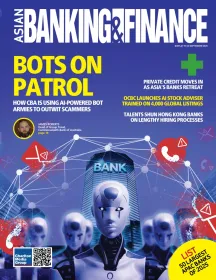Important flaws of Black Scholes Model most people don't know
By Rahul MaganIn 1973, Fisher Black, Myron Scholes and separately Robert Merton derived the Black-Scholes-Merton (BSM) model, which was rewarded the Nobel Prize in 1997. Despite its limitations, the model has survived until today as the dominant pricing model for standard and exotic European style options.
The model owes its success to its simplicity, high intuition and versatility. In 1997, the importance of their model was recognized worldwide when Myron Scholes and Robert Merton received the Nobel Prize for Economics. Unfortunately, Fisher Black died in 1995, or he would have also received the award [Hull, 2000].
The Black-Scholes model displayed the importance that mathematics plays in the field of finance. It also led to the growth and success of the new field of mathematical finance or financial engineering.
This paper is all about flaws with Black Scholes and subsequent linkages with Exotic Greeks. Directly Black Scholes is linked with six plain vanilla options Greeks and numerous exotics linked with each of these plain vanilla Greeks.
The paper is trying to establish relationship between plain vanilla and their linked exotics besides highlighting various thoughts on flaws with Black Scholes. As per author biggest flaw with Black Scholes is assumption of constant implied volatility & non applicability of principle of Skewness which is not true today due to huge monetization programs running by almost all central banks across the world.
Such monetization programs would give rise to implied volatility and swan shocks and continue to stay for longer periods of time unless balance sheet deleveraging starts which do have its own positive and negative repercussions.
Important Flaws with Black Scholes Model& linking with valuation model:
Exercise Timings
Black Scholes model should consider all three possible exercise timings scenarios using options– European, American and Bermudian.
This would help traders to price options in a better way considering reversal of trades at favorable fair valuation in live markets.
Today majority of the traders are keeping options in their derivatives portfolio under Available for Sale (AFS)or Held for Trading (HFT)categories hence forth they prefer American over European options.
The former can be realized any moment depends upon intrinsic & extrinsic valuation of the options however later might not be unless subject to reversal or cancellation.
There are hardly any traders left who keep Options as an derivative under Held till Maturity (HTM) hence forth restriction towards exercise timings is all flawed w.r.t current market structure.
Unified Risk free Interest rates (RFIR)
There is no single index or any G sec bond which can act as a risk free interest rate for all FX pricing models.
All G7 currencies are having their respective risk free interest rates hence forth no single interest rate can act as a universal risk free interest rate for respective currency pairs. As of now UST (United States Treasuries)yields are acting as unified interest rates to price any USD denominated options w.r.t G7 currencies where in USD is acting as base or termed currency.
Central banks are doing huge monetization along with maintenance of zero interest rates policy (ZIRP) for both shorter and longer period of debt portfolio. Considering that there should be multiple rates for multiple periods to do options valuations for respective currency pairs.
Constant Implied Volatility
Implied, Historical and realized volatility can never be constant as it keepschanging. That changedepends upon level of shocks in FX markets across the world as volatility is a Meta measure.
Any volatility measure can’t be constant for longer tenors hence forth options pricing models should consider moving or ranged volatility to price contracts. Black Scholes should also have ranged volatility as an input variable to price contracts in a better way.
Traders have to decide whether they would like to go with implied, realized, historical volatility (with or without outliers) or statistical volatility.
There is a great probable chance that Traders would use statistical volatility which is further derived using statistical data distributions. It may or might not have any outliers and all depends upon input valuation parameters taken by traders along with current valuation of stocks or currency pair in respective markets.
Price movement is normally distributed
We are living in the world of “Extreme Value Theory(EVT)” where in FX markets are always suspect to any kinds of swan events like white, grey, black and neon swan events.
Implied volatility can go either ways depends upon the shocks and their resistance. There are various technical or fundamental indictors available to assess the valuation of these black swan events but these indicators nowhere support any form of normal distribution.
Extreme value theory deals with the stochastic behavior of the extreme values in a process. For a single process, the behavior of the maxima can be described by the three extreme value distributions–Gumbel, Fr´echet and negative Weibull–as suggested by Fisher and Tippett (1928).
The key to EVT is extreme value theory which a cousin of better known central limit theorem which tells us what distribution of extreme value should look like in the limit as our sample size increases. Extreme value theory or extreme value analysis (EVA) is a branch of statistics dealing with the extreme deviations from the median of probability distributions.
It seeks to assess, from a given ordered sample of a given random variable, the probability of events that are more extreme than any previously observed.
In probability theory and statistics, the generalized extreme value (GEV) distribution is a family of continuous probability distributions developed within extreme value theory to combine the Gumbel, Fréchet and Weibull families also known as type I, II and III extreme value distributions.
By the extreme value theorem the GEV distribution is the limit distribution of properly normalized maxima of a sequence of independent and identically distributed random variables. Because of this, the GEV distribution is used as an approximation to model the maxima of long (finite) sequences of random variables.
The aforesaid are the 4 biggest flaws with Black Scholes which lead to inaccurate results in valuation of Options Pricing using either Reuters or Bloomberg. We are living in the world when these assumptions hold not true hence forth all traders should strive to amend the existing methodology of options valuations using Black Scholes.




















 Advertise
Advertise









